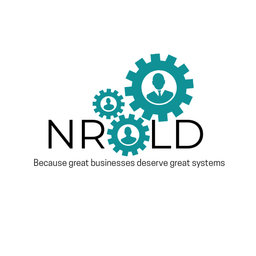Business Guide to Train Interns and Junior Staff to Be High Performers
Here is the secret: interns and junior staff are not there to just get work done; they are there to be developed. Investing in their training does more than just help them.

A great training program is not about a long, boring manual. It is about a structured, intentional process that turns raw talent into high-performing team members. This guide provides a step-by-step framework to help you do just that.
Step 1: Start Before Day One with a Structured Onboarding Plan
The first week for a junior team member is critical. It sets the tone for their entire experience. A disorganized onboarding process makes them feel like an afterthought. A structured one makes them feel valued and prepared.
The Framework: The "First Week Success Kit"
Your goal is to have everything ready before they walk in the door. Create a simple onboarding document or folder that includes:
- A Clear "First Day" and "First Week" Schedule: Don't leave them guessing. Outline their first week with specific meetings and tasks.
- Example Day 1: 9:00 AM - Welcome & Office Tour. 10:00 AM - IT Setup. 11:00 AM - Meet the Team. 12:00 PM - Lunch with their manager. 1:00 PM - Introduction to key software. 3:00 PM - First small task.
- A "Who's Who" Guide: A simple document with names, photos, and a one-sentence description of what each team member does. This helps them learn names and roles quickly.
- A List of Key Tools and Logins: All the software, tools, and passwords they will need to do their job.
- Their "Starter Project": A well-defined, small project they can start working on right away. This gives them an immediate sense of purpose.
A strong onboarding plan answers the three questions every new person has: "What am I supposed to be doing?", "Who do I need to talk to?", and "How do I do my work?"
Step 2: Delegate Effectively with the "What, Why, and How" Method
The biggest mistake managers make is giving tasks without context. This leads to confusion, mistakes, and a team member who doesn't understand the bigger picture.
The Framework: What, Why, How, and Who
Use this simple four-part method every time you assign a new task or project.
- The "What": Be Crystal Clear about the Goal.
- Don't just say, "Research some competitors."
- Instead, say, "Your task is to create a one-page document that lists our top three competitors and their main product features."
- The "Why": Explain the Big Picture.
- This is the most important step. Explain why the task matters.
- "We are doing this because the marketing team is preparing a new campaign, and they need to understand how we can position our product against the competition." This shows them their work is valuable.
- The "How": Provide Resources, Not a Micromanagement Plan.
- Give them a starting point. "You can start by looking at these three websites. Our past competitor reports are in this folder."
- Give them creative freedom where possible. "I have a certain format in mind, but feel free to add any other information you think is important."
- The "Who": Let Them Know Who They Can Ask for Help.
- "If you have a question about our product, talk to Sarah. If you get stuck on the research, check in with me." This creates a safe environment to ask questions.
Step 3: Implement a "Safe to Fail" Environment with Regular Feedback
Junior team members are going to make mistakes. That is part of the learning process. Your job is to create an environment where mistakes are treated as learning opportunities, not failures.
The Framework: The "Twice-a-Week Check-in" and The Feedback Sandwich
- Scheduled, Regular Check-ins:
- Don't wait for them to come to you with problems. Schedule two short, 15-minute check-ins each week.
- The Monday Check-in: Set the goals for the week. "What are your top 1-2 priorities this week?"
- The Friday Check-in: Review progress and provide feedback. "How did it go? What was one challenge and one success?"
- Give Balanced and Actionable Feedback using the "Feedback Sandwich":
- When you review their work, structure your feedback in a way that is encouraging but also clear.
- Top Bread (The Positive): Start with something they did well. "You did a fantastic job finding these statistics. This is exactly what we needed."
- The Meat (The Constructive Criticism): Be specific about what needs improvement. "On the next report, let's try to add a short summary at the top that explains the key takeaway. That will help the executive team see the main point quickly."
- The Bottom Bread (The Encouragement): End on a positive and forward-looking note. "This is a great first draft. I'm excited to see the next version."
Step 4: Empower Them with Ownership of a Real Project
The fastest way to grow is to be given real responsibility. Every intern or junior team member should have at least one long-term project that they own from start to finish.
What makes a good ownership project?
- It has a clear, defined outcome. "Create a social media content calendar for the next month."
- It is important but not mission-critical. Choose a project that will add real value but won't sink the company if it goes wrong.
- It requires them to collaborate. It should force them to talk to people on other teams.
Example of an Ownership Project:
An intern on the marketing team is given ownership of creating a "case study" of a happy customer. This project involves:
- Researching and identifying a good customer.
- Drafting interview questions.
- Scheduling and conducting a short interview (with their manager present).
- Writing the case study.
- Working with a designer to lay it out.
This one project teaches them communication, project management, writing, and collaboration skills. It also gives them something tangible to put in their portfolio.
Action builds business. Start small, start smart—then scale

This content is AI-assisted and reviewed for accuracy, but errors may occur. Always consult a legal/financial professional before making business decisions. nrold.com is not liable for any actions taken based on this information.


